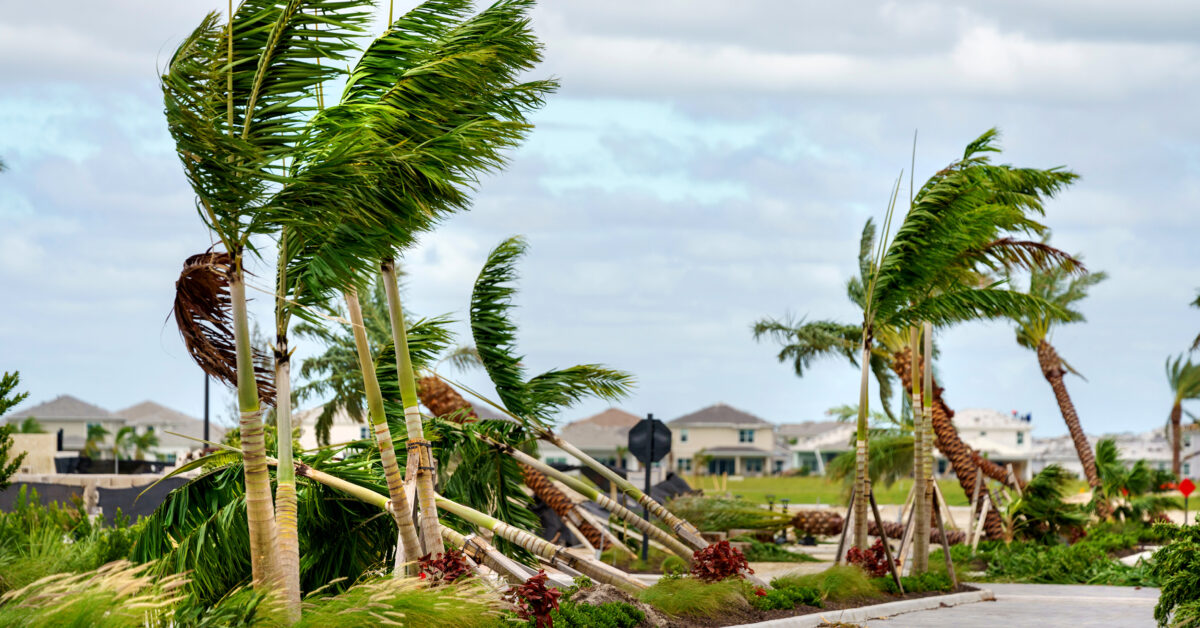
Are You Covered? Stay Up-To-Date on your Homeowners Insurance and Hurricane Plans
June 2025by Kristy Como Armand
Residents of Southwest Louisiana are all too familiar with hurricane preparation and hurricane recovery, not to mention the damage repeat storms can deliver. Chad Everage with Landscape Management offers advice on adding storm resistance and protection to your landscape investment.
Everage says when a major storm is approaching, there are several crucial steps recommended to mitigate potential damage and ensure the safety of your property and plants.
• Secure loose items such as patio furniture, garden tools and decorations to prevent them from becoming projectiles in high winds.
• Trim trees and shrubs, removing weak or overhanging branches that could break and cause damage.
• Anchor larger plants and trees with stakes if they are vulnerable to strong winds.
• Clear gutters and drains to ensure proper water flow and reduce the risk of flooding, which can damage plant roots and soil structure.
• Consider covering delicate plants or moving them to a sheltered area for protection from wind, hail or excessive rain.
“While completely hurricane-proofing your landscape is impossible, you can plan ahead to minimize damage by choosing plants, particularly trees, that are more likely to withstand hurricane-force winds and heavy rain,” says Everage.
Trees are often seen as a threat in severe weather situations, with branches becoming hazards and falling trees causing damage and delaying recovery efforts. But Everage says the right trees can also provide protection. “What trees are planted, and how they are planted, will increase the chances of their survival and can provide a valuable buffer zone against storm damage. Research has found that foliage density and topography can modify wind speed and direction.”
Everage explains that wind-resistant trees share common characteristics. They are typically native species, such as slow-growing hardwoods with a low center of gravity, deep, penetrating radial roots and flexible limbs with short leaf branching.
Picking the proper tree species is important, but Everage says other factors also contribute to hurricane-resistance as well. “A tree can be either wind-resilient or failure-prone based on where it is planted and the care it has received.” He offers the following advice:
Right Tree, Right Place. Choose native trees that are well-suited for your landscape. Avoid conflict between trees and hardscapes, and match planting space to the full-grown size of the tree. Plant larger trees away from your home, power lines, and other structures. This reduces the risk of branches—or trees—falling on your home and/or knocking down power lines.
Grouping. Trees in groups tend to sustain less damage than trees standing alone. Planting groups of mixed trees can enhance wind resistance. The trees buffer each other as well as your property.
Roots. Trees with wide spreading root systems are less likely to topple in strong winds, so it is important to allow trees enough room for their mature size. Circling/girdling root systems are one of the most common reasons for tree failure. Circling roots will never grow out in the landscape. As the canopy of the tree increases, the root ball stays small, which can result in the tree falling during a storm.
Maintenance. Regular pruning promotes healthy growth. Assess trees regularly. Remove limbs that are dying, damaged or weakly connected to the trunk. Thinning or reducing the crown can reduce trunk movement during a hurricane. You can also prune to reshape the tree. When done correctly, reshaping can make trees more resistant to wind damage. If branches are large or high in the tree, it’s best to get professional help.
“There are no guarantees when it comes to major hurricanes and the damage that can result,” says Everage. “But planning and proper maintenance can help reduce the risk of potential damage to your landscape and your property.”
For more information on the best choices for your landscape, call Landscape Management at 337-478-3836, stop by their retail nursery or visit landscapemanagement.org.






